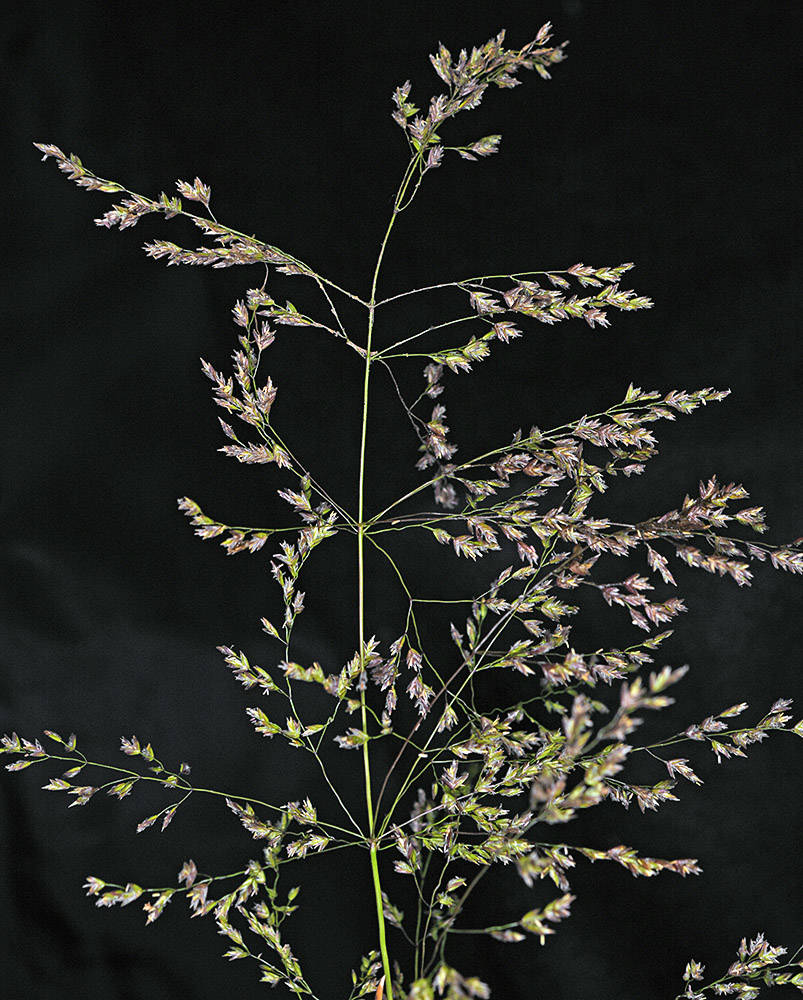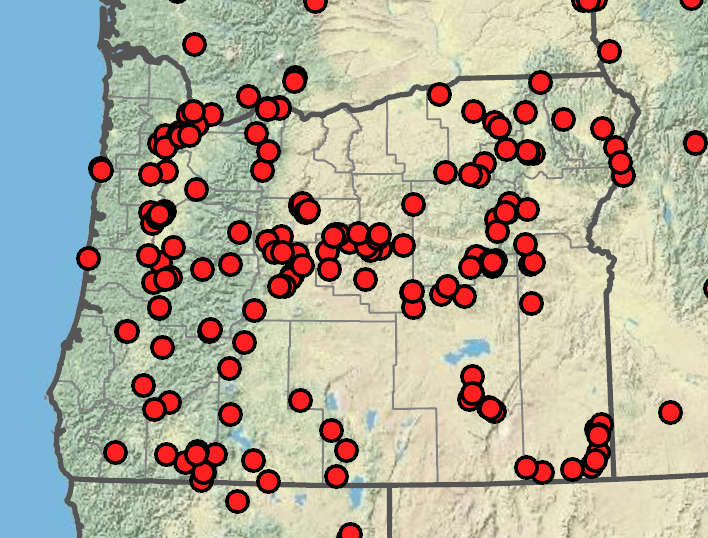Poa douglasii
Poa palustris
fowl bluegrass
nodes terete to slightly compressed;
proximal nodes often slightly swollen; the uppermost node usually at or above the middle of the culm.
extra- and intravaginal.
sheaths closed to 20% of their length, bases of basal sheaths glabrous;
ligules (1)1.5– 6 mm, truncate to acute;
blades flat, 1.5–8 mm wide, usually several on the culm, steeply ascending or spreading to 80°; upper blades often lax.
lax, eventually open, sparsely to moderately congested; (9)13–30(41)cm, generally 33–50% as broad as long at maturity;
spikelets 25–100+;
branches initially erect, eventually widely spreading to slightly reflexed, fairly straight; slender, 4–15 cm, 33–50% of the panicle length, 2–9 per node.
narrowly to broadly lanceolate, 3–3.5 times as long as wide, 3–5 mm;
florets (1)2–5;
rachilla internodes mostly less than 1 mm.
tapering from the base or lanceolate, distinctly keeled;
keels smooth or sparsely scabrous;
lower glumes 3-veined; long tapered to a slender point, 6.4–10 times as long as wide.
Poa douglasii
Poa palustris
Moist meadows, shorelines, ditches, forests, disturbed areas. 0–2600m. BR, BW, Casc, Col, ECas, Lava, Owy, WV. CA, ID, NV, WA; throughout most of Canada and US; circumboreal. Exotic?
Poa palustris has an open inflorescence, small lemmas and an open growth form produced by culms that often branch above the base. Poa nemoralis differs in having short, truncate ligules. Poa palustris from drier sites can be similar to P. interior, which has more lax leaf blades, calluses with sparse, short hairs, wider hyaline lemma margins and straight to slightly curved lemma keels. Poa interior has not been documented in Oregon. Both native and introduced populations of Poa palustris exist in North America, and Oregon plants have generally be considered introduced. However, some populations may be native.
Rob Soreng, Barbara Wilson, Richard Brainerd, Nick Otting
- Local floras:
BC,
CA,
OR,
WA
- Local Web sites:
CalFlora,
CalPhotos,
Flora NW,
PNW Herbaria
WildflowerSearch
iNaturalist (observations)
USDA Plants Database
- LBJ Wildflower Center
- SEINet
- Plants of the World Online
- Encyclopedia of Life
- Wikipedia
- Google Image Search



